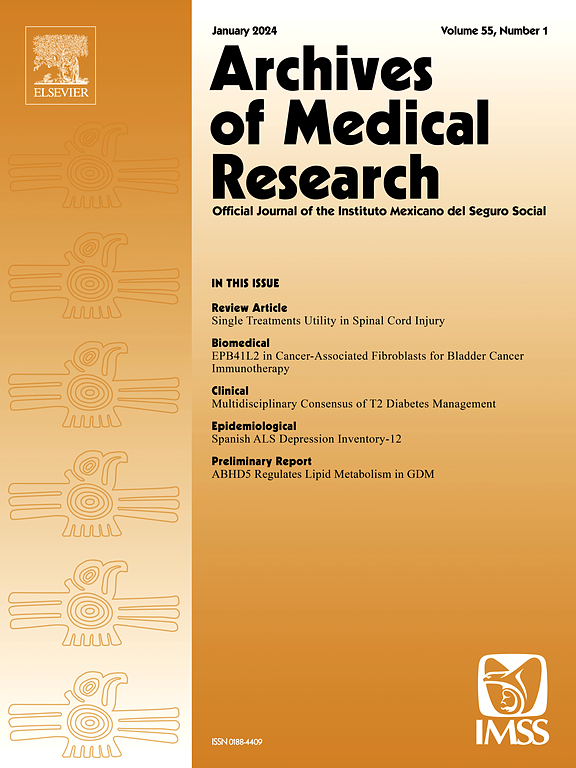Comparative Analysis of Cortical and Trabecular Bone Structure Between Patients With Type 2 Diabetes and Healthy Controls
IF 3.4
3区 医学
Q1 MEDICINE, RESEARCH & EXPERIMENTAL
引用次数: 0
Abstract
Background and Aims
This study evaluates three-dimensional dual-energy X-ray absorptiometry (3D-DXA) parameters that determine the cortical and trabecular compartments in patients with type 2 diabetes (T2D) compared to nondiabetic subjects, with the aim of identifying their determinants.
Methods
Patients with T2D were diagnosed according to ADA criteria. Anthropometric measurements were taken, and body mass index (BMI) was calculated. Bone densitometry (DXA) images were analyzed with 3D Shaper software. Volumetric bone mineral density (vBMD), bone mineral content (BMC), and volume were calculated in various regions of the femur, along with cortical thickness. Data analysis was performed using SPSS 27.0, a Student t-test and ANCOVA.
Results
A total of 125 subjects were recruited: 51 healthy controls and 74 patients with T2D (70.3 % women), with an average age of 53.9 and 53.6 years, respectively. The average disease duration in the T2D group was 11.4 years. Significant vitamin D deficiencies (levels <20 ng/mL) were found in 56 % of the control group and in 64 % of the T2D group. No significant differences in aBMD were observed between the two groups. 3D-DXA analysis showed consistently lower vBMD in patients with T2D vs. controls, with significant differences in the trochanter, femoral neck, and average cortical thickness. A positive correlation was observed between waist circumference, BMI, and higher bone density in all regions.
Conclusions
This study demonstrates the potential of 3D-DXA to detect cortical and trabecular bone differences in patients with T2D, undetectable by aBMD. Women with T2D showed lower bone parameters in the trochanter and femoral neck, consistent with research linking long-term T2D and poor glycemic control to compromised bone quality.
2型糖尿病患者与健康对照者皮质骨和骨小梁结构的比较分析
背景和目的本研究评估了2型糖尿病(T2D)患者与非糖尿病患者的三维双能x线吸收仪(3D-DXA)参数,以确定其决定因素。方法根据ADA标准诊断t2dm患者。进行人体测量,计算身体质量指数(BMI)。使用3D Shaper软件分析骨密度(DXA)图像。计算股骨各区域的体积骨矿物质密度(vBMD)、骨矿物质含量(BMC)和体积以及皮质厚度。数据分析采用SPSS 27.0、Student t检验和ANCOVA。结果共纳入125例受试者:健康对照51例,T2D患者74例(70.3%为女性),平均年龄分别为53.9岁和53.6岁。T2D组的平均病程为11.4年。56%的对照组和64%的T2D组存在明显的维生素D缺乏(水平≤20 ng/mL)。两组间aBMD无显著差异。3D-DXA分析显示,与对照组相比,T2D患者的vBMD始终较低,在粗隆、股骨颈和平均皮质厚度方面存在显著差异。在所有地区,腰围、BMI和较高的骨密度之间都观察到正相关。结论:本研究证明3D-DXA可以检测到aBMD无法检测到的T2D患者皮质骨和小梁骨差异。患有T2D的女性股骨粗隆和股骨颈的骨参数较低,这与长期T2D和血糖控制不良与骨质量受损的研究相一致。
本文章由计算机程序翻译,如有差异,请以英文原文为准。
求助全文
约1分钟内获得全文
求助全文
来源期刊

Archives of Medical Research
医学-医学:研究与实验
CiteScore
12.50
自引率
0.00%
发文量
84
审稿时长
28 days
期刊介绍:
Archives of Medical Research serves as a platform for publishing original peer-reviewed medical research, aiming to bridge gaps created by medical specialization. The journal covers three main categories - biomedical, clinical, and epidemiological contributions, along with review articles and preliminary communications. With an international scope, it presents the study of diseases from diverse perspectives, offering the medical community original investigations ranging from molecular biology to clinical epidemiology in a single publication.
 求助内容:
求助内容: 应助结果提醒方式:
应助结果提醒方式:


